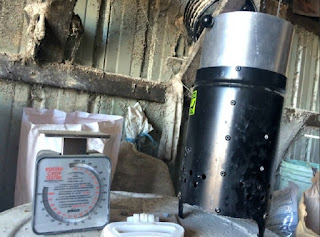It's normally difficult for somebody to acknowledge that it's feasible to get an exact estimation of the moisture content of wood, feed, drywall, or whatever else just by utilizing a handheld instrument for a few seconds. That is the reason one of the inquiries individuals regularly pose to Delmhorst's help group is "exactly how precise are moisture meters readings?"
How very much kept up with the meter is.
An accurate moisture tester utilized on the right material can be exact to inside under 0.1% of the material's moisture content by weight. Notwithstanding, a low-end moisture meter can be fiercely erroneous. This is on the grounds that inferior quality moisture meters may not comprise of innovation progressed enough to yield more exact moisture testing results.
How about we investigate a portion of the various variables that influence moisture meter exactness:
 |
| Grain Moisture Tester |
Kind of Moisture Meter Being Used
There are two kinds of grain moisture testers usually accessible today: Pin-type and pin less moisture meters.
Pin-type moisture meters utilize the rule of electrical protection from measure the presence or nonattendance of water in the wood, drywall, roughage, and different materials. At the point when actuated, the electrical flow goes down one cathode, through the material being tried, and into another terminal. The measure of protection from the momentum is utilized to figure how much water is available in the material. Since water is a conductor, the less obstruction there is, the higher the moisture content of the material being tried.
Pin less moisture meters utilize an electromagnetic recurrence to "examine" a particular region for the presence of moisture. The moisture estimation introduced by these gadgets is normal for the all-out space of the output. This makes pin less meters somewhat less exact as far as the specific moisture content at a particular point, yet quicker at distinguishing the presence of stowed away pockets of moisture in underlying materials like wood.
No comments:
Post a Comment